A tale of two artists in the Midwest and a jar of William S. Burroughs’ poop
All photos by the author unless otherwise noted.
It’s just noon, and already ribbons of heat are slithering from the pavement surrounding the soybean fields. Dust from the screeching tires on the car in front of us balloons into the sky, casting a sleepy haze over an already tired Kansas afternoon.
The car in front of us pulls into a driveway and down a short avenue of oak trees. My companion, Patrick Lichty, a tactical media artist and ranking member of The Yes Men, pulls in behind them, and as we park we are presented with a comfortable, brick-red farmhouse shaded by the surrounding trees. Chickens scour the front yard for feed, and a sweet-natured collie and her cat friend come to greet us as we step out of the car. Our hosts, Tony Allard and Adam Zaretsky, are already headed up the walk to the house, and we step over the assorted garden statuary —a typewriter, a ceramic rooster, a stone skull—to join them.
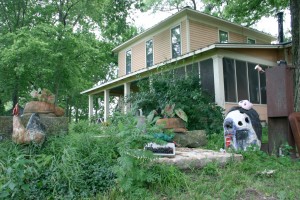
The house belongs to Wayne Propst, self-acclaimed plumber to the famed Beat writer William S. Burroughs, and an artist in his own right. Propst and two friends, Jim McCrary and David Ohle, sit around a table on the porch, watching us as we approach the house. Allard and Zaretsky are here to interview some of Burroughs’ closest friends about their controversial art project, “Mutate or Die,” which uses William S. Burroughs’ DNA.
Allard and Zaretsky have been working on this project for over a year now. Allard, a multi-media artist and teacher at California State University San Marcos, met Zaretsky at a workshop at the Banff Centre in 2009. Zaretsky had been speaking about his own practice exploring the ethics of biotechnology through lab work and artistic experimentation. When Allard, originally from Kansas City, discovered that Propst had a well-preserved fecal sample from Burroughs, he asked if he and Zaretsky could take a core sample and try to sequence the Beat writer’s DNA. Now in Propst’s living room and with cameras rolling, Allard hands Propst a small cedar box. His two friends on either side, Propst opens the box and pulls out a dirty handkerchief, followed by the petit jar of the preserved poop.
“Does it have any odor?” Ohle asks. Propst gingerly unscrews the top of the jar and takes a deep breath.

“It’s a slimy barn yard, bit like a feed lot at seven miles away,” he responds, offering the jar to Ohle to confirm. Ohle too inhales and shrugs his shoulders in agreement with Propst’s assessment.
Allard and Zaretsky are currently making a documentary about Burroughs’ peculiar literary artifact. In fact, they have just completed three days in a Kansas City, Missouri lab extracting a core sample from Burroughs’ feces with the hope that they might be able to get a sample of Burroughs’ DNA. With support from Grand Arts, also based in Kansas City, the pair is documenting their process to extract the DNA and purchase a gene gun to shoot the material into other biological organisms.
The project has already received considerable attention. Last fall, Allard and Zaretsky shot interviews for “Mutate or Die” with key scientists and philosophers on the subject of genetic modification or enhancement, and began receiving coverage from AOL.com and Humanity Plus. Zaretsky, no foreigner to controversy, is quick to allay the obvious fears of mutants and clones.
“We’re not going to get anything that mutates and crawls away, probably. The strands of DNA that we have are from small strands to long strands, but where they’re cut is random,” he explains to the group sitting on the porch. “We’re not attaching vectors. We’re not taking William S. Burroughs’ lung gene and putting it in a human lung or a mouse lung. We’re not getting that detailed. It’s about chance.”
A road trip from Chicago to Kansas City via Route 66 to visit the home and archive of one of the Beat Generation’s standard bearers seemed like a perfect distraction to the listless afternoons of late. In his final years, Burroughs was sought out by young writers, poets and musicians like Kurt Cobain and U2 in the quiet town of Lawrence, Kansas. As Patrick and I wove down the highway to Kansas City a few days before our pilgrimage to Propst’s farm, we talked about our own feelings of frustration with social media and technological dependence. One of the most striking things about Beat literature or memoirs from the era is how quickly friends depart and arrive, meeting up haphazardly in foreign cities.
How could we inject that incidental nature back into our lives? Even our road trip was dominated by technology, from our acute GPS system, to the iPod and radio transmitter that kept us sane for ten hours, to the near hourly correspondence with our hosts regarding our arrival time. In spite of our romantic notions of a classic road trip, those haphazard encounters seem just as fictional as the rest of the Beat literary works. And despite their insistence, this happenstance seems absent from the “Mutate or Die” project too. Back in the Kansas farmhouse, Zaretsky explains the project as Burroughs’ friends listen on with skepticism.

“We won’t necessarily find anything unless it flowers in a mutagenic way,” he says, passing around a gel print of the amplified DNA sample. “But what we are doing is accessing chaos. We’re chancing it using something like cutup.” Zaretsky and Allard will be using the gene gun (a modified biotechnology air rifle) to shoot DNA-soaked gold dust pellets into organisms like apple seeds, and hope to allow the public to do the same. This performance is expected to draw a lot of attention, but Zaretsky and Allard will be following standard lab protocols the entire time.
“We’re not going to get anything that mutates and crawls away,” Zaretsky concedes.
Propst interrupts, “This project reminds me of ‘Einstein’s Brain’ [Kevin Hull’s 1994 documentary]. The movie that was made where this obsessive Japanese guy was searching for Einstein’s brain, and it led him to Burroughs and Lawrence, Kansas, and the original pathologist who was there at the death of Einstein. It’s a quest of sorts, like what you’re doing.”
“But they actually found the brain here [in Lawrence],” Ohle adds, “Under a sink or a fridge.”
“In a Tupperware container,” says McCrary. “You should look for it.”
“I don’t understand what you’re trying to do,” Propst finishes, “but whatever you’re trying to do, if you’re as fortunate as the Einstein brain guy, you’ll actually get a chunk of brain. I don’t think he actually dreamt that he would get a chunk of brain.”
The interviews conclude a while later, and we loiter a while on the porch. Allard and Zaretsky decide that before we return to Kansas City, Missouri, we have to go to the house of William S. Burroughs in the center of Lawrence. Dusk is falling as we drive into town, and I ask Zaretsky if he thought he really had the poet’s DNA.
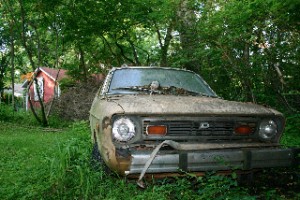
“We’re not doing anything that’s particular. It could be undigested food or bacteria or human or a mixture of all of them and we’re not actually targeting anything. It could be anything,” he explains. I’m wary of this statement, having spent the better part of the day listening to stories about Burroughs and his thoughts on art, guns and genetic modification. It’s pretty apparent that a key part of Allard and Zaretsky’s “Mutate or Die” project is exploring artistic aura on a genetic level. Though I’m respectful of biohazard regulations, I’m also mildly disappointed that neither artist will be on the receiving end of a game of William Tell, and that there won’t be a Burroughs mutant to tell us first hand what the ethical implications of biotechnology are.
We pull up to Burroughs’ former home – a modest Sears house from 1933. The current resident of the property is busy, we’re told, but we can look around the yard. We wander through the grass to the Burroughs’ Datsun, which sits rusting in a corner of the yard. The cat cemetery in the middle of the yard still stands as a tribute to Burroughs’ favorite pets. The owner of the home comes out to greet us; we can take a look through the house, but we have to be quick – he’s got another party coming by soon.
About our Guest Contributor, Georges Negri:
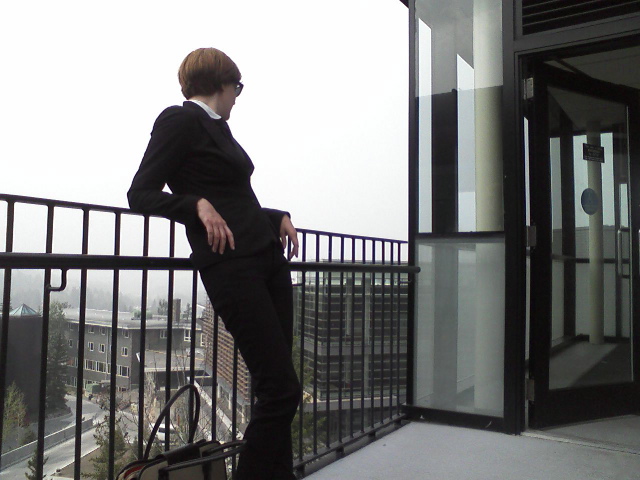
Georges Negri is an MA-candidate in Visual and Critical Studies. He was born in Edmonton, Canada and over the past two years, he has contributed to the Edmonton Journal, Edmonton AM on CBC Radio One, PrairieArtsters.com and Shotgun-review.ca. Negri recent worked on a nine-month art criticism and writing residency at the Contemporary Artist Centre at Woodside, in Troy, New York. He has performed at a number of venues, including the Stedelijk Bouwkeet and Wasteland in Amsterdam, Flux Factory in New York City, The Alberta College of Art and Design, and Interactive Screen 0.9 and 1.0 (2009 and 2010) at the Banff New Media Institute, part of the Banff Centre in Alberta, Canada. In his spare time, Georges tends to the Post-Luddite Institute, a multimedia project that focuses on social engagement with digital technologies and the affects it may have on art, culture and politics. Visit postludditeinstitute.com



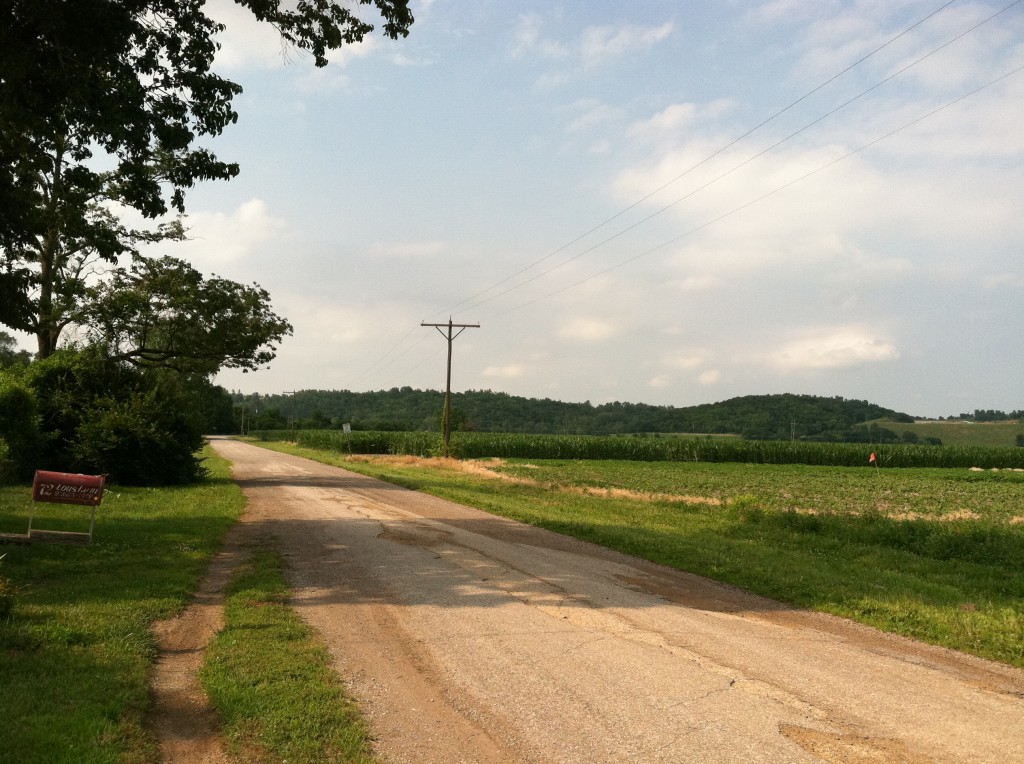
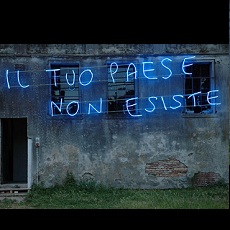
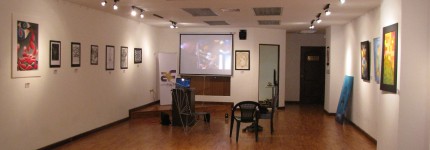



[…] **Updated: Text Added** I’ve been working on this story for a few weeks and it’s finally out. […]